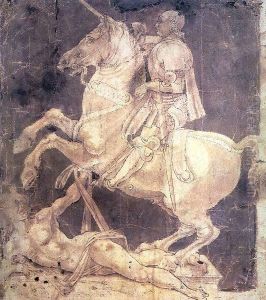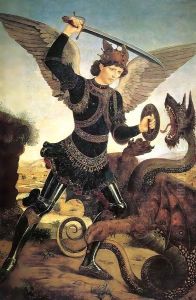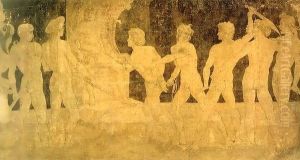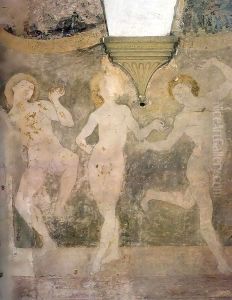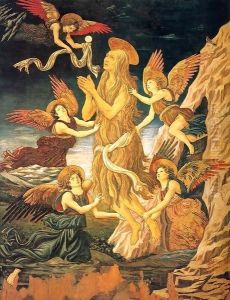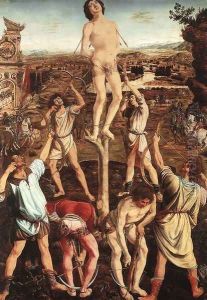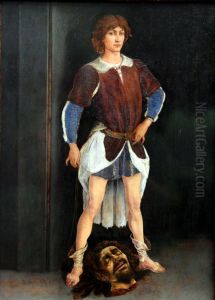Antonio Del Pollaiuolo Paintings
Antonio del Pollaiuolo, also known as Antonio di Jacopo Pollaiuolo or Pollaiolo, was an influential Italian artist of the Quattrocento period, known for his work in painting, sculpture, engraving, and goldsmithing. Born in Florence, Italy, he trained under the watchful eye of his elder brother, Piero, and the two brothers often worked together, creating a number of collaborative artworks. Antonio's work is characterized by its strong sense of line and form, as well as a fascination with the human anatomy, which was evident in the muscularity of his figures and his studies of the human body in motion.
One of Pollaiuolo's most famous works is the 'Battle of the Nudes' (c. 1465), an engraving that showcased his interest in the human form and his skill in depicting figures in various complex poses. This piece was significant in its demonstration of movement and has been considered a precursor to the dynamic compositions of the High Renaissance.
Antonio del Pollaiuolo was also renowned for his religious paintings. His altarpiece 'The Martyrdom of Saint Sebastian' (completed in 1475) for the Pucci Chapel in the church of Santissima Annunziata in Florence is one of his standout works in this genre. His paintings often featured detailed landscapes and a very precise use of color and light, which became a hallmark of his style.
In addition to his painting and engraving, Pollaiuolo was a skilled sculptor. He created several notable bronze pieces, including the tomb of Pope Sixtus IV and the tomb of Pope Innocent VIII, both in St. Peter's Basilica in Rome. His work in sculpture continued to reflect his interest in the human body, often portraying figures with a sense of vitality and movement.
Antonio del Pollaiuolo's influence extended beyond his lifetime, with his emphasis on anatomical precision and movement informing the work of later Renaissance artists. He died in Rome in 1498, leaving behind a legacy of artistic innovation and a body of work that remains admired for its mastery of form and motion.

